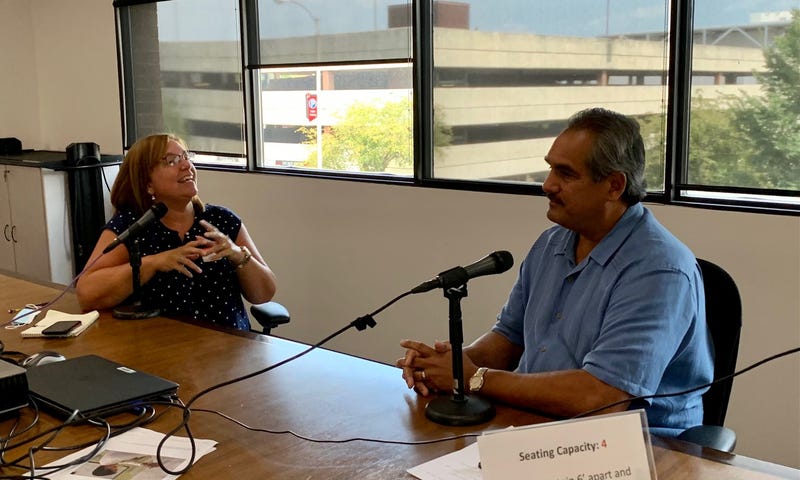
ST. LOUIS, MO (KMOX) - "Our mission is to serve our local community with solid, verified information that people can use in their lives and can use to make decisions," explains Gilbert Bailon, Editor of the St. Louis Post-Dispatch. In recent years the way the newspaper has fulfilled that mission has evolved from print to an online presence. Bailon is the latest content creator to take part in KMOX's "What the Media?!!?" podcast, pulling back the curtain on the industry. To listen go to the link below.

Demand for digital content is surpassing what comes off the press, says Bailon. "I think sometimes people think of newspapers and you think only print, that is a significant part of what we do. But far more than that, now we do multimedia, " points out Bailon. "We have video, we have podcasts, we have all kinds of things that we do that are only digital, that don't appear in print. The stories may be similar, but we can do a lot more online because space is unlimited. We can do things like a video that we can't do in a printed page." Readers who access the Post-Dispatch's digital portal STLToday.com from smart phones and tablets are a growing part of readership.
Bailon adds the ways reporters and editors can show they've done the leg work to verify a story is also more accessible, "Well, we've always been in the business of verification. We'll continue to do that. What we do... ...is show people our work. We tell them where we got it. We put names on it. Online, we can put documents, we can put video, we quote people, we can hear people talk... ...you can judge for yourself about these firsthand documents."

What stories make the front page on the newstand and on the homepage? Stories that impact people's daily lives and stories of significant reader interest are priorities for the Post-Dispatch. Newspapers are still largely structured by reporter beats. Although Bailon notes the newsroom staff is not as big as it used be be, so anyone can be called on to cover breaking news.
Once written, stories are vetted by a series of editors before being offered to readers. Not every print story has a picture attached. For online stories, however, images are in greater demand. There's a photography staff, reporters often use cell photos to capture a scene, and then there are pics and videos offered by the public. "Somebody off the street says, 'here's a crime [that] happened in my neighborhood' or 'I witnessed this'. How do you verify that? We go through different ways. Sometimes you can ask them to show you how they got it. Are there witnesses? But it's a tricky area because there's so much photo manipulation and... ...fake stuff that's out there. We are very, very deliberate about that, about what we use. We don't randomly put stuff on our website or in our paper that we don't know where it came from."
"What the Media?!!?" asked Bailon about whether the online audience is able to discern between a news report, opinion, analysis, and commentary from today's news sites. "I think it's a real fundamental issue we have because there's been a blending with whether it's cable news or people who are bloggers or in our case, we have an editorial page, which is very clearly opinion. We have guest columns, we have syndicated columns. We label that opinion."
What makes for a good day for a modern newspaper? Bailon says if people are better informed, "we're doing our job."
@2021 Audacy (KMOX). All rights reserved.
